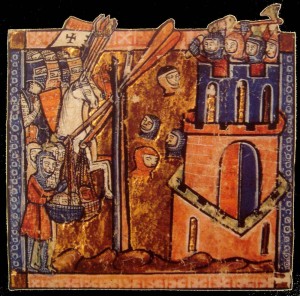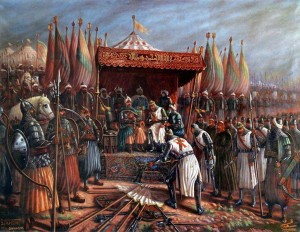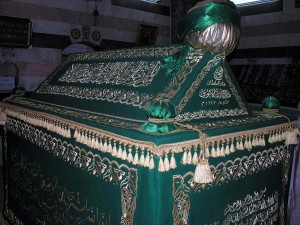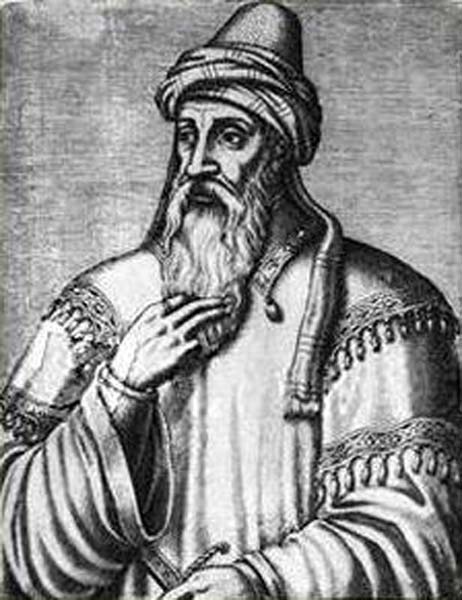Saladin or, Saladin Yusuf Ayyub al-Dawinin, was born to Najmuddin Ayubb in 1137 in Mesopotamia. He belonged to a broader Kurdish lineage and was known for his affinity for Sunni Islamic theology. Although Saladin was born in Mesopotamia, he lived there only until he was the age of ten when his family moved to a city near the Nile River. As a young man, Saladin was very astute and very brave. He was poised from a very early age to play a significant role in Islamic society.
Rise to Power
Saladin quickly rose up to become one of the most influential people in northern Africa while developing a strong relationship with the reigning Sultan at the time, Nur-Ad-Din. He would later succeed Nur-Ad-Din after his death and subsequently marry his widow. Although there were many rulers in the region who predated him, he proudly carried the title “Founder of the Ayyubid Dynasty.” Saladin’s kingdom spanned from Egypt to Syria.
Historical studies suggest that Saladin was the most influential Muslim ruler since the Prophet Mohammed. Muslims everywhere viewed him as a great leader, particularly because he unified large Muslim societies in northern African and western Asia. Once Saladin succeeded king Nur, he established a strong military and engaged his enemies in bloody war campaigns. His enemies were also Christian Crusaders who attacked from regions surrounding Jerusalem and the Jordan River.
Although Saladin’s campaigns defended Muslims, he is claimed to have been partial to his allies as well. Once he gained power, he began appointing close friends and family members to senior governmental positions. His brothers and cousins gained stature by becoming governors as well.
Relationships With Neighboring Societies
 One of Saladin’s most memorable battles was the Battle of Hattin, which took place in 1187 and pitted his soldiers against those of Jerusalem. This battle’s victory earned him particular recognition in regions as far north as England. Over time, Saladin attempted to expand his empire. It is said that by 1192 he had signed peace treaties with King Philip of France and King Richard of England in order to establish relationships which would span from the Islamic Empire to the borders of northern England.
One of Saladin’s most memorable battles was the Battle of Hattin, which took place in 1187 and pitted his soldiers against those of Jerusalem. This battle’s victory earned him particular recognition in regions as far north as England. Over time, Saladin attempted to expand his empire. It is said that by 1192 he had signed peace treaties with King Philip of France and King Richard of England in order to establish relationships which would span from the Islamic Empire to the borders of northern England.
Saladin’s portrait was inscribed on medieval coins. The “Eagle of Saladin” was named after him and so too was the “Province of Saladin” which is located in today’s Iraq. Saladin was a man of prodigious means. His kingdom had numerous agricultural and mineral resources, and he had large amounts of currency, surely a result of the spoils of war. Saladin’s military was feared, and it is known that if he challenged any kingdom on the battle field he would conquer them. Saladin planned his campaigns carefully, weighed the cost, and instead of relying on Egypt alone as his primary means of support her looked to northern Mesopotamia, Syria, and the Levant coastline.
Saladin and Latin Christianity
 Saladin focused most of his efforts defending other Muslims in order to create a homage to the Prophet Mohammed’s life. At one time, his kingdom extended beyond modern day Tripoli and the Middle East, as far as Yemen and Syria. Most of Saladin’s time was spent strategizing how to eliminate political and military control by Western Christians, particularly those who settled in Jerusalem. Islamic warriors saw Roman Catholic Christians as enemies; they were to be executed or forcefully converted. Saladin embarked on a holy war–a Jihad–in an effort to capture and control the burgeoning city-states of Western Europe.
Saladin focused most of his efforts defending other Muslims in order to create a homage to the Prophet Mohammed’s life. At one time, his kingdom extended beyond modern day Tripoli and the Middle East, as far as Yemen and Syria. Most of Saladin’s time was spent strategizing how to eliminate political and military control by Western Christians, particularly those who settled in Jerusalem. Islamic warriors saw Roman Catholic Christians as enemies; they were to be executed or forcefully converted. Saladin embarked on a holy war–a Jihad–in an effort to capture and control the burgeoning city-states of Western Europe.
The Christian Response and Muslim Generosity
In the early years of Saladin’s reign, his military victories came easy. However, over time his kingdom began to face large scale opposition. His Christian neighbors began regrouping and shifting military strategy in an attempt to regain portions of their territories firmly under his control. In the period between 1189 and 1191, Saladin faced significant onslaughts from Christian adversaries to the north.
Saladin was a very generous leader. He ensured that the Muslim people could live a decent life. He shared a significant portion of his riches with his citizens and brave soldiers.
Saladin’s Legacy and Contemporary Art
The role of Saladin in the history of Middle Age Islamic society has been appreciated by interdisciplinary scholars alike. University academics consider the reign of Saladin to be a precursor to the rise of modern Islam as an international, global religion. His role in shaping the regions of Africa and the Middle East collectively is also very significant.
There have been many films made about his life. The movie, Saladin, which premiered in Egypt in 1962, was about the conquest of Jerusalem in 1187. Other films such as Nathan the Wise, which premiered in 1922, and Arn-The Knight Templar, released in Sweden in 2007, glorify the life of Saladin. Western European authors have also played a significant part in celebrating Saladin’s legacy. He has inspired the works of modern  poets and has attracted the art of playwrights and directors, of theater and film.
poets and has attracted the art of playwrights and directors, of theater and film.
The Death of Saladin
Saladin died in Damascus in 1193. Saladin’s mausoleum has been carefully preserved, and a silver plate which bears his name is situated right above it. Saladin’s legacy is particularly amazing. His influential role in shaping medieval Islamic society still resonates today in art, culture, religion and society.
